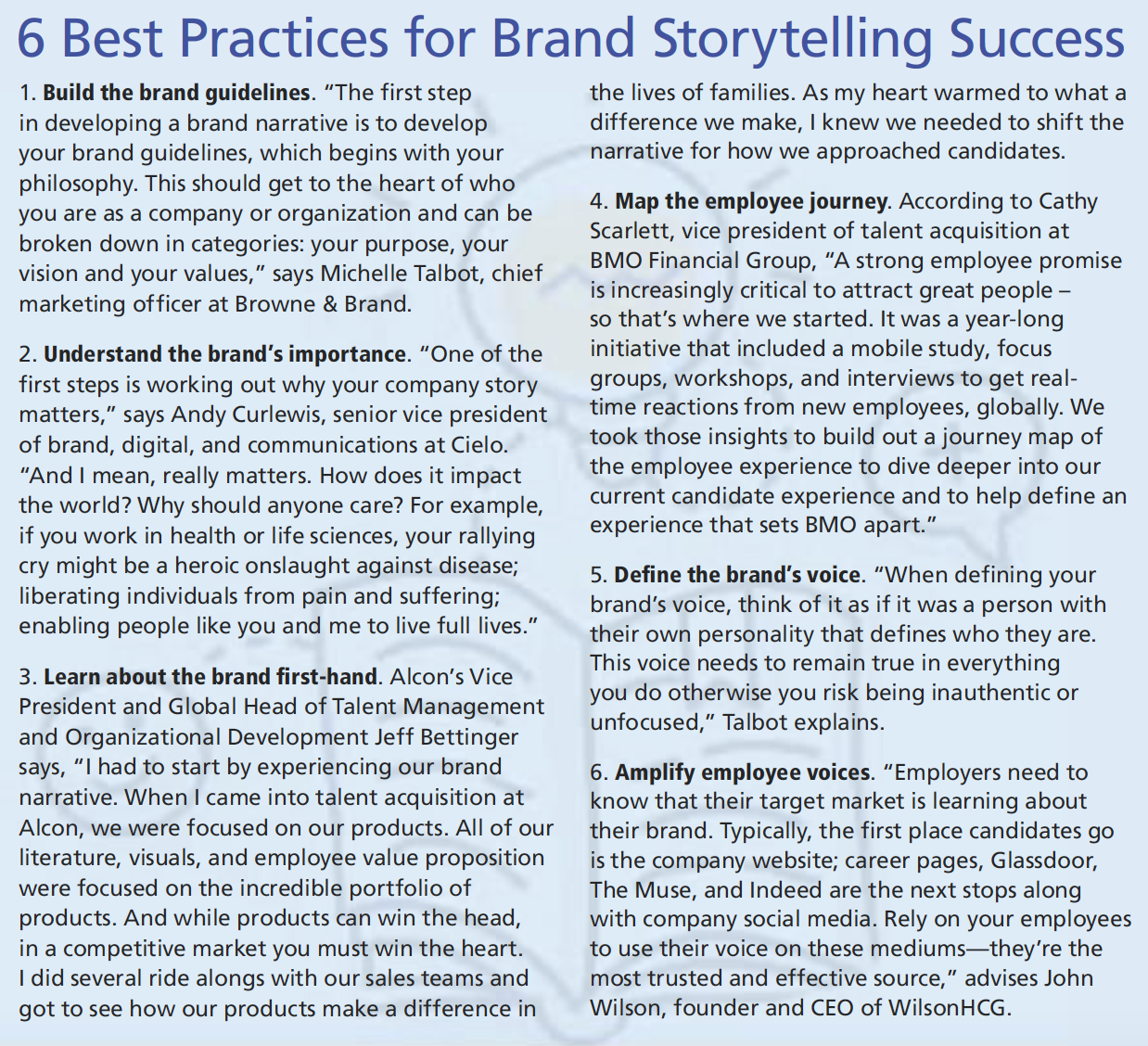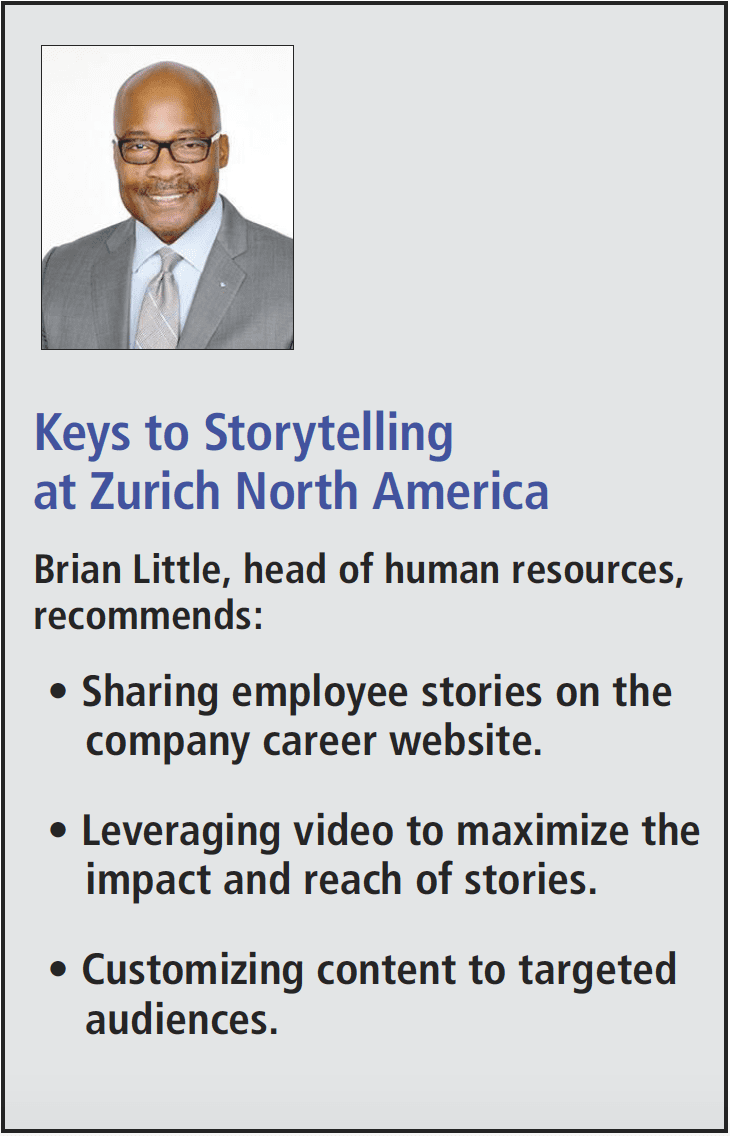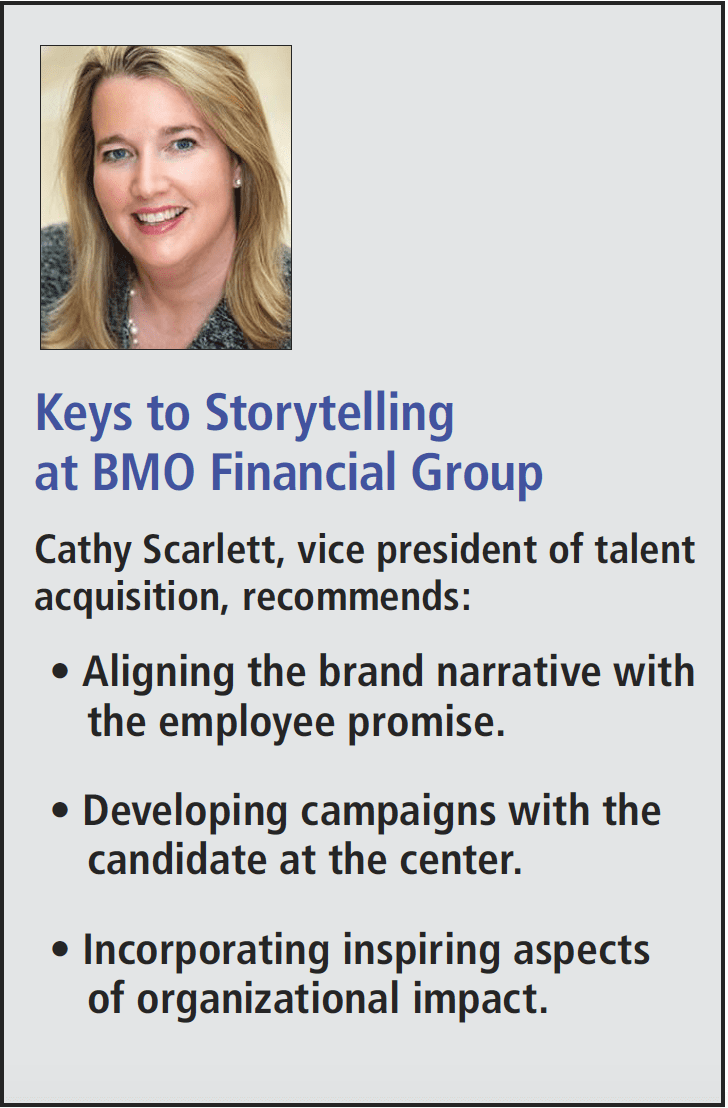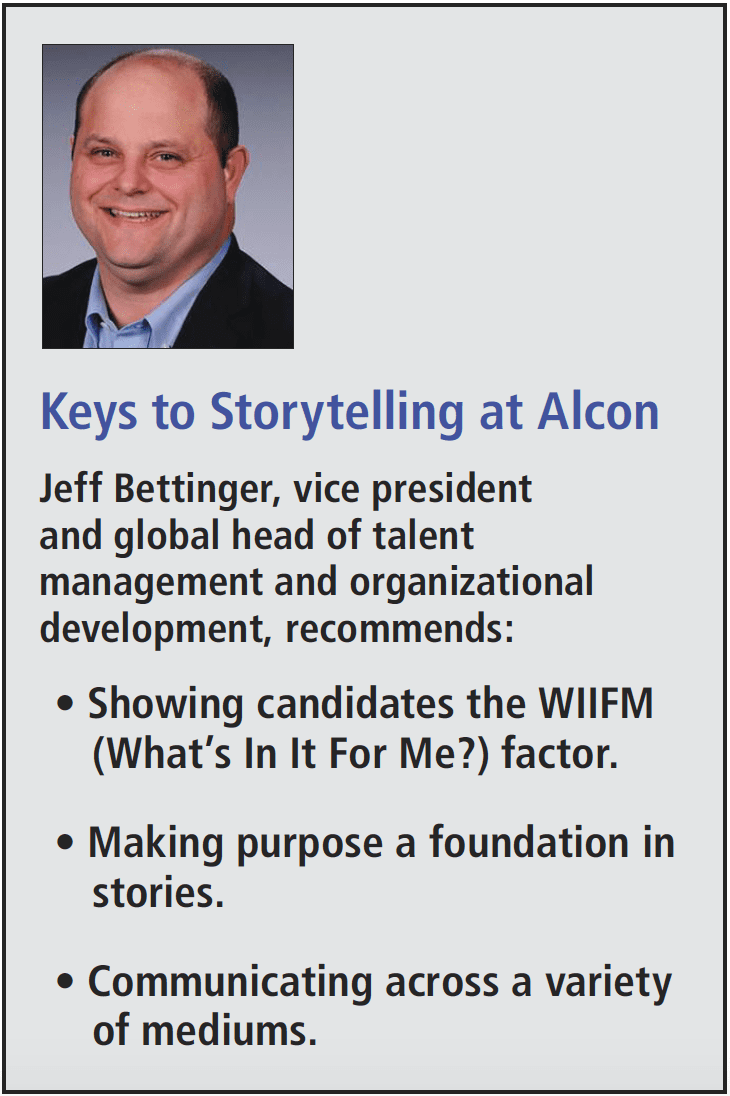Sharing brand storytelling in an authentic way helps companies connect and engage with employees at many levels.
By Marta Chmielowicz
Storytelling is an ancient and universal human trait. From visual stories told through cave drawings and ancient hieroglyphs to epic poems communicated to the masses, stories have been central to how humans connect, learn, and make sense of the world. Even with the advent of printing, and later, technology, the common themes and narratives found in good stories remain constant.
But in the last few decades, the way that people tell and listen to stories has continued to change. Media is now consumed more quickly and frequently than ever before with new communication platforms emerging every day, often providing access on all types of devices. Storytellers are now faced with the challenge of communicating their narratives in this ever-evolving media landscape.
While this accelerated rate of information consumption has opened up a world of opportunity for companies looking to generate interest around their content and brands, it has also created an environment that is highly competitive. “With the digitization [of our business and personal worlds] and today’s much-publicized broader political context comes a more cynical outlook from voters, customers, employees, and candidates. Reputation websites are now commonplace and not just the preserve of Glassdoor or Indeed,” says Andy Curlewis, senior vice president of brand, digital, and communications at Cielo.
In this challenging environment, embracing transparency and authenticity when developing a cohesive brand story is the key to success. “Transparency, truth, and accountability are disciplines that we need to be better at -and this must start with both a clear vision and an ability to tell our stories in a relevant and authentic manner,” Curlewis explains.
Organizations that are able to develop a unique and authentic voice that connects with their audience will be rewarded with higher engagement and loyalty to their brand. Browne & Brand‘s Chief Marketing Officer Michelle Talbot says, “If the story is compelling, it not only gets attention but will get people excited to be part of your company. We all want to feel part of something with likeminded people who are either working toward the same goal or are compelled to support the mission a company or brand is putting forth. This affects employee engagement because the brand story becomes their story, and they will want to do good by it and spread the word.”
Greatness Defined
What defines great brand storytelling? According to Curlewis, “Good brand storytelling means you have a clear and differentiated brand proposition that is segmented to the relevant employees, candidates, locations, and job types; that you understand your talent market and have the right reach into and engagement with it; that you have an authentic and respected reputation; and that you are able to offer an exceptional candidate or employee experience that drives the right behaviors needed for your business, both now and in the future. This will, in turn, impact your top and bottom line. We call this ‘talent magnetism’.”
Brand storytelling is more than just a marketing strategy -it is the culmination of everything a company is and does. From an organization’s history to its goals, purpose, and the way it is perceived by its audience, a good brand story makes a company come alive.
Successful brand stories often share three common features:
- A distinctive and consistent voice. “Brand storytelling is a powerful way to bring a company’s brand to life, which means the narrative has to reflect core elements of the brand’s identity and promise,” says Brian Little, head of human resources at Zurich North America.
In addition to clearly demonstrating an organization’s key values, brand storytelling should illustrate the value that a company can bring to those who support it. “A strong brand narrative starts with a strong employee promise that truly represents your company. A strong employee promise is critical for a company to stand out in the marketplace and ensure it leads in attracting and keeping great people,” says Cathy Scarlett, BMO Financial Group‘s vice president of talent acquisition.
And for the best results, it is important that this messaging is consistent throughout the entire candidate and employee experience. “We’ve put the candidate at the center of everything we do to create experiences that are personalized, simple, intuitive, and predictable. My team is more than a group of recruiters -they are brand ambassadors for the company. As someone moves from candidate to employee, our core values and what we stand for should always feel the same,” Scarlett adds.
According to John Wilson, founder and CEO of Wilson HCG, this is important because “There is a direct correlation between the candidate and employee experience and your consumer brand. Candidates and employees are also customers and consumers. Everything from your employer brand to the candidate experience to the way you treat your workforce impacts your customer base.”
- An authentic message. “I think the biggest component of great brand storytelling is authenticity,” Talbot says. “Getting people connected to your brand at an emotional level is the best way to keep people engaged and connected. People like vulnerability and will be more likely to engage if a company or organization is talking to them at a human level.”
Wilson believes that authenticity can best be achieved by leveraging the stories of existing employees. By providing real examples of achievement and demonstrating the passion of the workforce, these stories can inspire and motivate candidates and employees to become a part of something greater. “It’s important to give your people the platform to tell their stories -what they do, why it’s important to them, and how it makes an impact,” he says. “This is much more powerful than any corporate message. In this way, organizations establish trust and credibility with their talent -subsequently leading to better engagement as well as recruitment as a whole.”
For example, Zurich North America leverages employee-driven content to illustrate the elements that make the company unique with great results. “We recently redesigned our careers website to incorporate stories and narratives from our employees on why they like to work at Zurich, how their careers are being developed here, and what motivates them to deliver for our customers. We also plan on launching social media campaigns this year to reinforce key themes that reflect our company culture, purpose, and values,” explains Little.
A compelling and engaging format. It’s not enough to write a great brand narrative -companies also need to ensure that their content is being seen and shared online. With the prevalence of social media, brand stories that are short, sweet, and engaging have the best chance of success.
Jeff Bettinger, vice president and global head of talent management and organizational development at Alcon, believes that simplicity and brevity is key.” A great story has to be told answering one simple question: ‘Why is this important for me?’ If we can’t answer that in the first 10 seconds, we have already lost the audience. We want people to feel something within seconds and see themselves at Alcon by the end of the message,” he explains.
Once a concise message is developed, it should be shared across multiple formats and platforms in order to meet the widest audience possible. “We have used quotes, videos, photos, and developed a variety of social media memes and other storytelling devices to convey our brand,” says Bettinger. “We use Facebook, Glassdoor, and Indeed primarily in the United States. In areas outside the U.S., we have worked with our local HR teams to ensure we used platforms that were relevant to that region or location. We also did and continue to do significant training of our recruitment teams on how to share the message of Alcon.”
While brand narratives should be presented in both visual and written formats, video is particularly effective in capturing and holding an audience’s attention. Curlewis says, “Video remains a premium medium for storytelling. At the top end of the investment scale, you have hero videos, which tell an epic story of the brand’s vision, purpose, and impact in the world. At the most affordable end, you can have employee-shot footage. Both can be enhanced through music and skillful editing. And videos can be edited into different lengths for different channels, making them one of the most versatile and powerful forms of engagement.”
While Zurich North America leverages a combination of quotes, videos, photos, and write-ups in their brand storytelling strategy, videos have generated the best results. “Video is by far the format with one of the highest engagement rates, and we intend to maximize the impact of this medium to convey our stories,” confirms Little. “Going forward, we plan to do more short videos of employees aligned with key themes such as diversity and inclusion, customer focus, community impact, and winning together in the marketplace.”
Themes that Make an Impact
The most effective brand stories incorporate all of these elements using classic archetypes that are specifically tied to certain themes. Some of these themes include:
Transformation. From how an organization has evolved throughout the years to opportunities for growth with the business, transformative stories can be leveraged in several different ways.
“Transformation is a key ingredient in storytelling,” says Cielo’s Curlewis. “It’s important to also think about story arcs: Where has your business come from? What ordeals have you overcome? What feats of strength and courage propelled you from okay-ness to greatness? What form will your next transformation and triumph take? And what does that mean for your people? Share your vision, be transparent about the journey that you’re on, and invite employees and potential candidates to help shape the next chapter. Invite them to be part of your adventure.”
The theme of transformation is particularly powerful in BMO Financial Group’s brand storytelling strategy. “People underestimate how inspiring a career at a bank can be and overlook or leave a banking career because it’s uninspiring. However, with the rapid change of the external landscape, this is the perfect opportunity to help shape financial services for today and tomorrow. That’s how we settled on a bold challenge to future employees: Let’s change the way the world banks,” explains Scarlett.
- Opportunity. Another key idea that resonates strongly with candidates is career growth and development. “The ability to learn and progress is now a principal driver of a company’s employer brand. Candidates and employees are making their decisions on whether these opportunities exist. Employers need to capitalize on this trend rather than fight against it,” Wilson says.
Great brand stories should invite candidates to become part of an organization that is worthwhile and exciting -a place where they can contribute as an individual and realize their own potential as they help the business grow.
Zurich North America leverages this theme in their strategy by mapping the employee journey and identifying key moments that define the employee experience. “To develop a brand narrative, our marketing team leveraged findings from the employee experience work to humanize our brand by featuring several employees at various stages of their journey at Zurich on our careers website and in internal communications,” Little explains. “In addition, we also featured our ‘Community Investment Volunteer Award’ winners on the community impact section of the company website. These are ways by which we are creating emotional connections with current and future employees.”
Doing good. Brand stories are most effective when they are personal, compelling, and emotionally-charged. It’s important to win hearts as well as minds, and one of the most inspiring ways to do that is by demonstrating how the audience can make a difference in the world by engaging with an organization.
“You must engage people emotionally. Illustrate meaning and help people to derive a sense of purpose from what they do. Connect the dots between their daily activities and making the world a better place. Purpose-led individuals derive more satisfaction and fulfillment from their work because they believe that their activities matter,” says Curlewis.
Purpose is the foundation of Alcon’s brand storytelling success. “The secret sauce of Alcon is the difference we make in millions of lives each year. We help people see better. Who doesn’t want to be part of making that difference to families and those impacted by eye disease or issues? Every day, we go to work finding ways to bring solutions to the physicians who bring sight. Highlighting these stories in our career materials, website, and in our social media allows us to tell the story to potential employees that they can be part of that noble cause,” says Bettinger.
Brand storytelling is a key aspect in an organization’s attraction and retention strategy. One thing HR professionals should keep in mind is that a one-size-fits-all approach will not suffice. “It’s important to note that it’s a collection of well-written stories, delivered with a frequency and targeting that is relevant for the intended audience, which ultimately differentiates good from great brand storytelling,” says Little. “No single story is going to move the needle as much as a series of stories that collectively reinforces the company’s brand promise, strategy, purpose and values.”
LEARN MORE
[metaslider id=”11458″]


















